
Managing Depression with CBT For Dummies
by Brian Thomson and Matt Broadway-Horner

Managing Depression with CBT For Dummies
Published by:
John Wiley & Sons, Ltd
The Atrium, Southern Gate
Chichester
www.wiley.com
This edition first published 2013
2013 John Wiley & Sons, Ltd, Chichester, West Sussex.
Registered office
John Wiley & Sons Ltd, The Atrium, Southern Gate, Chichester, West Sussex, PO19 8SQ, United Kingdom
For details of our global editorial offices, for customer services and for information about how to apply for permission to reuse the copyright material in this book please see our website at www.wiley.com .
The right of the author to be identified as the author of this work has been asserted in accordance with the Copyright, Designs and Patents Act 1988.
All rights reserved. No part of this publication may be reproduced, stored in a retrieval system, or transmitted, in any form or by any means, electronic, mechanical, photocopying, recording or otherwise, except as permitted by the UK Copyright, Designs and Patents Act 1988, without the prior permission of the publisher.
Wiley publishes in a variety of print and electronic formats and by print-on-demand. Some material included with standard print versions of this book may not be included in e-books or in print-on-demand. If this book refers to media such as a CD or DVD that is not included in the version you purchased, you may download this material at http://booksupport.wiley.com . For more information about Wiley products, visit www.wiley.com .
Designations used by companies to distinguish their products are often claimed as trademarks. All brand names and product names used in this book are trade names, service marks, trademarks or registered trademarks of their respective owners. The publisher is not associated with any product or vendor mentioned in this book.
Limit of Liability/Disclaimer of Warranty: While the publisher and author have used their best efforts in preparing this book, they make no representations or warranties with the respect to the accuracy or completeness of the contents of this book and specifically disclaim any implied warranties of merchantability or fitness for a particular purpose. It is sold on the understanding that the publisher is not engaged in rendering professional services and neither the publisher nor the author shall be liable for damages arising herefrom. If professional advice or other expert assistance is required, the services of a competent professional should be sought.
For general information on our other products and services, please contact our Customer Care Department within the U.S. at 877-762-2974, outside the U.S. at (001) 317-572-3993, or fax 317-572-4002.
For technical support, please visit www.wiley.com/techsupport .
A catalogue record for this book is available from the British Library.
ISBN 978-1-118-35718-7 (pbk), ISBN 978-1-118-35717-0 (ebk), ISBN 978-1-118-35715-6 (ebk), ISBN 978-1-118-35716-3 (ebk)
Printed in Great Britain by TJ International Ltd, Padstow, Cornwall


Introduction
D epression is one of the most common health problems that people experience, and it can decimate lives. Research shows that one in five people suffer from depression at some time, and yet its still one of the most misunderstood conditions, often confused with sadness, misery or unhappiness.
This book guides you towards a better understanding of depression and helps you to recognise and address the symptoms by using an approach called cognitive behavioural therapy (CBT). The great thing about CBT is that it uses tried and tested methods to help you understand how you became depressed and what is keeping you depressed and empowers you not only to help yourself overcome it and start living a fulfilling life again, but to help other people too.
One patient told us that shed suffered from depression all her life, and that she thought it was genetically based because both her parents had suffered from depression throughout their lives. However, she agreed to try CBT and within the first few weeks she had begun to understand her depression better and to feel empowered to take charge of her life. By the time she completed her treatment, she felt confident in dealing with whatever life threw at her without sinking into depression. At the end of her treatment, she sent us a lovely thank-you card, in which she said:
If only someone had explained these things to me when I was young, my life would have been so different. I used to think that it was the things that happened in my life that made me depressed, but youve taught me that its more about how you respond to what happens, and this has given me the power to keep my depression at bay.
Similarly, CBT can work for you, helping you to understand and overcome your own depression. And with all the practical information gathered together between its covers, Managing Depression with CBT For Dummies is just the tool you need to get started and use CBT yourself.
About This Book
When youre suffering from depression, you often feel isolated and as if nothing can improve your situation. But think of this book as an encouraging friend whos on your side. Within it, I help you to become your own therapist, leading you to understand what causes depression, what keeps you depressed, and what effects depression has on your life and the people around you. I then give you lots of tips for taking back control of your life and for improving your mood.
To do so, I describe CBT and the many practical ways in which it can help. More specifically, I examine:
 The basic CBT model of how depression affects your thoughts, feelings and behaviour
The basic CBT model of how depression affects your thoughts, feelings and behaviour
 The scientific bases for how CBT can help
The scientific bases for how CBT can help
 Ways to identify the specific problems that depression is causing in your life
Ways to identify the specific problems that depression is causing in your life
 How to identify and achieve realistic goals
How to identify and achieve realistic goals
 How to discover what causes you to become depressed
How to discover what causes you to become depressed
 How to overcome depression
How to overcome depression
 How to prevent depression recurring in the future
How to prevent depression recurring in the future
Conventions Used in This Book
My aim is to make this book extremely easy to find your way around, and to help out I use a number of conventions:
 Italics indicate new words and medical terms. Although I stick to language that avoids jargon and technical terms as much as possible, some new concepts occasionally arise that require explanation. I highlight these with italics and explain the term prior to discussing how to use it.
Italics indicate new words and medical terms. Although I stick to language that avoids jargon and technical terms as much as possible, some new concepts occasionally arise that require explanation. I highlight these with italics and explain the term prior to discussing how to use it.

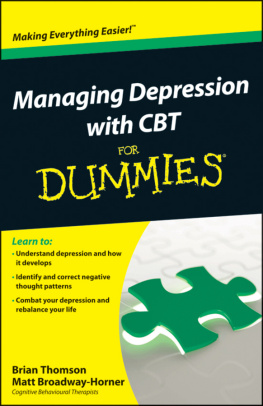
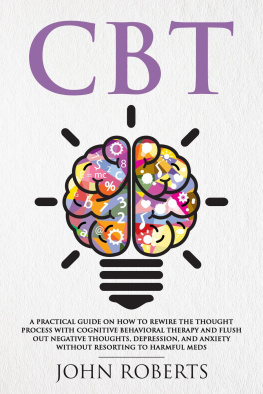



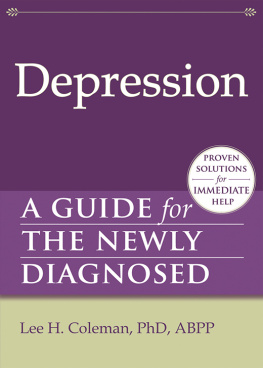
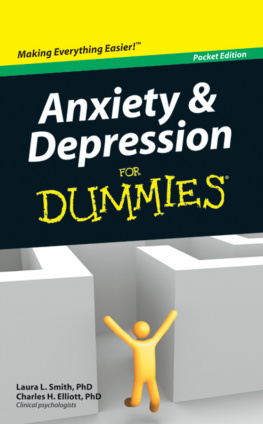

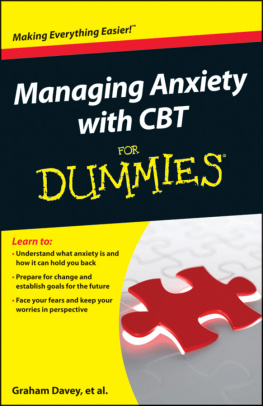
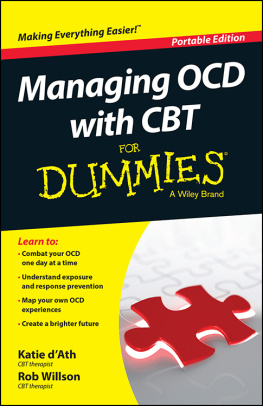







 The basic CBT model of how depression affects your thoughts, feelings and behaviour
The basic CBT model of how depression affects your thoughts, feelings and behaviour